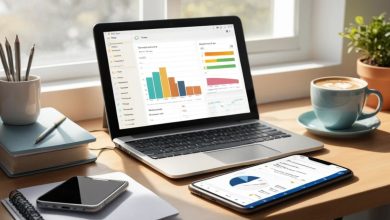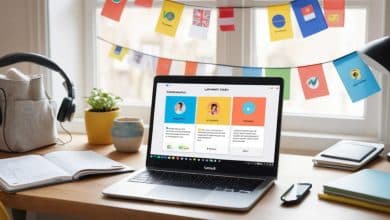Curated Educational Resources for Budget-Conscious Schools
Stretching tight school budgets while maintaining high-quality instruction is a constant challenge. Fortunately, a wealth of curated educational resources exists—ranging from free open textbooks to grant-funded kits—that can bolster your curriculum without straining your finances. In this guide, you’ll discover how to leverage these tools, explore real-world success stories, and learn a step-by-step plan to implement cost-effective solutions schoolwide.
Why Affordable, Curated Resources Matter
When every dollar counts, selecting the right resources isn’t just smart—it’s essential. Affordable, curated materials help schools:
-
Ensure equity: All students access high-quality materials, regardless of their district’s funding level.
-
Maximize ROI: Strategic resource choices improve learning outcomes while stretching limited dollars further.
-
Reduce recurring expenses: Digital content often has no licensing fees, eliminating annual renewals.
-
Save teacher prep time: Vetted resources align with standards, allowing educators to focus on instruction rather than research.
-
Unlock additional funding: Many donors and grant-makers favor schools that demonstrate a clear, curated resource plan.
Categories of Curated, Budget-Friendly Resources
| Category | Examples & Benefits |
|---|---|
| Open Educational Resources (OERs) | – OpenStax Textbooks: Free, peer-reviewed textbooks for math, science, and humanities. – OER Commons: Searchable library of standards-aligned lesson plans and modules. |
| Free & Freemium Digital Platforms | – Khan Academy: Comprehensive math, science, and reading modules with progress dashboards and teacher analytics. – CK-12: Customizable e-textbooks and virtual labs for K–12. |
| Grant-Funded Programs | – DonorsChoose Projects: Teachers describe classroom needs; donors fund entire projects, from Chromebooks to art supplies. – NEA Foundation Grants: Provide STEM kits, literacy packages. |
| Low-Cost Subscription Bundles | – Clever: District-wide single sign-on giving students free access to partner apps and discounted resources. – CommonLit Premium: Offers a free tier; upgrade for advanced analytics. |
| Community Partnerships & Donations | – Local Library STEM Kits: Borrow robotics, circuit kits, and lab materials at no cost, rotating resources between schools. – Corporate Sponsorships: Tech companies often donate refurbished devices or software licenses. |
| Secondhand & Refurbished Materials | – Used Textbook Markets: Platforms like Better World Books or campus buyback programs offer heavily discounted or free textbooks. – Refurbished Laptops/Tablets: Certified nonprofits (e.g., TechSoup) supply affordable devices with warranties. |
| Teacher-Created Collaborative Resources | – Teachers Pay Teachers (Free Section): Thousands of peer-shared lesson plans, worksheets, and project templates at no cost. – Edutopia Community Shares: Activity guides, video tutorials, and editable templates contributed by educators. |
Comparative Analysis: Paid vs. Free Budget Resources
| Resource Type | Free Tier Features | Paid Tier Advantages | Ideal For |
|---|---|---|---|
| OpenStax & OER Commons | Full-access to peer-reviewed textbooks; downloadable PDFs | N/A | Replacing core print textbooks |
| Khan Academy & CK-12 | Complete course modules, practice exercises, basic teacher analytics | CK-12: deeper e-textbook customization; Khan Academy: test-prep bundles (Sat, LSAT) | Supplemental digital curriculum |
| DonorsChoose & NEA Foundation Grants | Application guidance, partial funding for specific classroom materials | N/A | One-off equipment or project funding |
| Clever & CommonLit Premium | Basic content access; single-school implementation | District analytics, premium lesson plans, real-time progress reports | Streamlined district-wide resource management |
| Local Library STEM Kits | Free borrowing of robotics kits, engineering packs, science lab materials | N/A | Hands-on STEM experiences |
| Used Textbook Markets | Discounted or free shipping on used textbooks | New editions, teacher editions, bundled print resources | Physical textbook needs at minimal cost |
| Teachers Pay Teachers (Free) & Edutopia | Classroom-ready lesson plans, project ideas, editable templates | Premium bundles and publisher-licensed versions | Quick lesson planning, creative teaching aids |
Pros & Cons
-
Free Resources
-
Pros: Zero licensing fees, quick access, community-vetted quality.
-
Cons: May require teacher vetting, limited official customer support, potential variability in rigor.
-
-
Paid Budget Options
-
Pros: Dedicated support channels, curated content aligned to standards, premium analytics.
-
Cons: Recurring subscription costs, potential vendor lock-in, budget planning required.
-
Schools Thriving on Tight Budgets
Urban Elementary School Leverages OER and Grants
Background: A Title I urban school with limited per-student funding struggled to afford updated textbooks and STEM materials.
Resources Used:
-
Adopted OpenStax for core math and science textbooks, saving $10,000 annually on print materials.
-
Secured DonorsChoose funding to purchase 30 Chromebooks and a robotics starter kit.
Outcome:
-
25% increase in 5th-grade math proficiency scores within one year.
-
40% rise in participation in after-school STEM clubs, enhancing engagement and exposure to coding fundamentals.
Rural Middle School Implements Freemium Digital Platforms
Background: A rural district faced unreliable shipping times for textbooks and lacked a dedicated science lab.
Resources Used:
-
Deployed Khan Academy math modules for both remedial students and accelerated learners.
-
Utilized CK-12’s virtual labs for 6th-grade science, allowing students to conduct simulated experiments online.
Outcome:
-
30% reduction in the number of students requiring remediation classes by mid-year.
-
15% boost in science lab engagement metrics, with students completing virtual labs 50% faster than previous paper-based assignments.
Suburban High School Builds Community Partnerships
Background: A suburban high school faced budget cuts that threatened hands-on STEM programs.
Resources Used:
-
Partnered with the local library to access rotating STEM toolkits (robotics, circuitry, coding kits) at no charge.
-
Collaborated with a tech company to receive 50 refurbished laptops for blended learning applications.
Outcome:
-
Launched an after-school coding club that attracted 60 students in its first semester, doubling previous club enrollment.
-
Achieved a 1:1 device ratio by distributing laptops, resulting in a 20% improvement in digital literacy scores across all grade levels within six months.
Implementing Curated, Budget-Friendly Resources
-
Conduct a Needs Assessment
-
Survey teachers to identify critical resource gaps (e.g., outdated textbooks, lack of science lab equipment).
-
Review past expenditure reports to pinpoint high-cost line items—print materials, single-use lab kits, and software licenses.
-
-
Identify Available Free & Low-Cost Options
-
OER Platforms: Bookmark core subject resources like OpenStax and OER Commons.
-
Grant Opportunities: Draft concise DonorsChoose proposals for high-need items—explain educational impact, detail costs.
-
Freemium Trials: Pilot Khan Academy math modules or CK-12 virtual labs with a single grade level to gather initial feedback.
-
-
Pilot & Evaluate
-
Select one resource from each category (e.g., OpenStax for textbooks, Khan Academy for supplemental math).
-
Run a four-week pilot; collect teacher feedback and measure student performance via pre-and post-module quizzes.
-
-
Secure Approvals & Partnerships
-
Present pilot results to the school board, highlighting cost savings (e.g., “Saved $10K on textbooks”) and performance improvements.
-
Formalize agreements with community partners—draft MOUs with the public library for STEM kit access and negotiate device donation terms with corporate sponsors.
-
-
Scale Across Classrooms
-
Roll out approved resources district-wide or to additional grades.
-
Schedule teacher training sessions (2–3 hours) on integrating each tool—cover login procedures, lesson planning tips, and troubleshooting common issues.
-
-
Continuous Monitoring & Iteration
-
Track key metrics each quarter:
-
Cost savings compared to previous year’s budget.
-
Platform usage statistics (e.g., Khan Academy logins, CK-12 lab completions).
-
Academic performance changes (e.g., standardized test scores, formative assessment data).
-
-
Replace underperforming resources or secure additional grants based on emerging needs.
-
Metrics to Monitor Success
-
Cost Savings: Measure annual reduction in textbook and material purchasing; aim for at least 20% decrease in print expenditures.
-
Usage & Engagement:
-
Track teacher and student logins on digital platforms, aiming for 75% active adoption within six months.
-
Monitor average time spent on OER modules or virtual labs to gauge engagement.
-
-
Academic Performance:
-
Compare pre- and post-implementation assessment scores in targeted subjects (e.g., math, science), targeting 10–15% improvement.
-
Review standardized test benchmarks to confirm long-term impact.
-
-
Participation Growth:
-
Measure increases in after-school club memberships (e.g., STEM or coding clubs), aiming for 50% year-over-year growth.
-
Track frequency of library STEM kit checkouts as an indicator of hands-on learning engagement.
-
FAQs
What are the best free core subject textbooks for K–12?
OpenStax offers peer-reviewed, free textbooks for middle and high school math, biology, chemistry, and physics. CK-12 provides FlexBooks—customizable digital textbooks covering STEM subjects for grades K–12.
How do I apply for DonorsChoose funding for my classroom?
Create a teacher account on DonorsChoose.org, craft a clear project description including a budget breakdown and learning objectives, and submit for donor review. Many projects fully fund within 30–60 days, as donors appreciate tangible, impact-driven proposals.
Can we integrate freemium platforms without reliable internet?
Yes. For platforms like Khan Academy, lessons can be downloaded via the mobile app for offline use. If internet connectivity is intermittent, consider installing a local intranet caching server (e.g., Kolibri) to serve OER and Khan modules without continuous external bandwidth.
How do refurbished devices compare to new ones for classroom use?
Refurbished laptops and tablets—sourced from certified nonprofits like TechSoup—often meet performance needs for educational software at 30–50% lower cost. Ensure devices include a warranty and basic maintenance plan to minimize downtime.
What’s the best way to vet teacher-created free resources?
Use a rubric evaluating alignment to state standards, instructional clarity, and evidence of student engagement. Conduct a small-scale pilot with multiple teachers, gather structured feedback, and refine or discard resources based on observed effectiveness in improving student outcomes.
Conclusion
Budget-conscious schools don’t have to sacrifice quality. By tapping into open educational resources, grant-funded initiatives, freemium digital platforms, and community partnerships, administrators can deliver a rich, standards-aligned curriculum without exceeding financial constraints. Follow the step-by-step implementation plan—starting with a thorough needs assessment, piloting top tools, and scaling proven solutions—to create a sustainable ecosystem of cost-effective resources. Continuous monitoring ensures that each dollar invested translates into measurable improvements in student engagement and academic success. With a curated strategy, every classroom can thrive, regardless of budget size.
Published on: 4 de June de 2025








